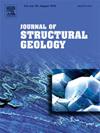Tunisia, located in the Northern African margin, was subjected to Late Permian-Early Cretaceous N–S extension subsequent to Pangea breakup and leading to the Tethyan opening and widening. During the Mid- and Late Cretaceous, the NE–SW crustal extension that established the Pantelleria-Malta-Sirt grabens system underlining the eastern margin stretched also the Tunisian Atlassic domain, creating and/or reactivating many NW-SE extensional structures as much as the grabens in central Tunisia and leading to volcanism and halokinesis along several weak zones. Neogene compressional tectonics inverted the earlier extensional structures and impacted most of the halokinetic features established within the post-Triassic cover. The M'Rhila-Labaied-Trozza fault relay zone, located in the middle of central Tunisia, shows both extensional and compressional structures with Triassic extrusive features and seems to be a key feature for understanding the geodynamic development of the area. In this work, we combined field and geophysical data together with analogue models to decipher the structure and the kinematic evolution of the study area. The results showed that the studied structures are associated with reactive Mesozoic salt ridges established along an extensional fault relay zone that utilized NW-SE, E-W and NE-SW inherited fractures. These initially created extensional corridors allowing Triassic evaporite extrusion and accumulation, then influenced the deformation of the area in transpressional and local pure compressional regimes depending on the fractures and stress orientations during tectonic inversion. Analogue guided interpretation of the successive deformational stages of the study area from salt ridge growth to its tectonic inversion.


